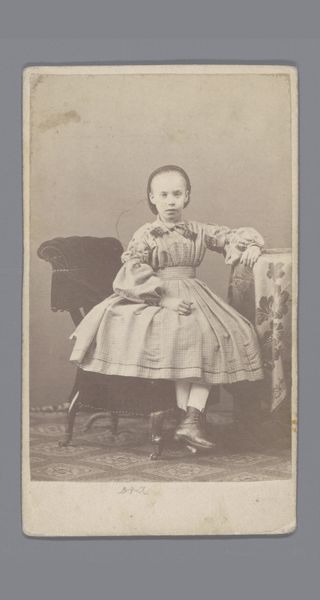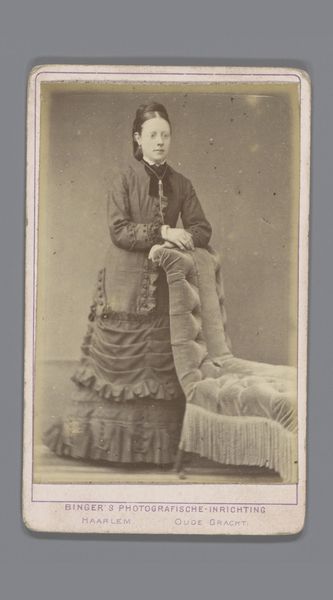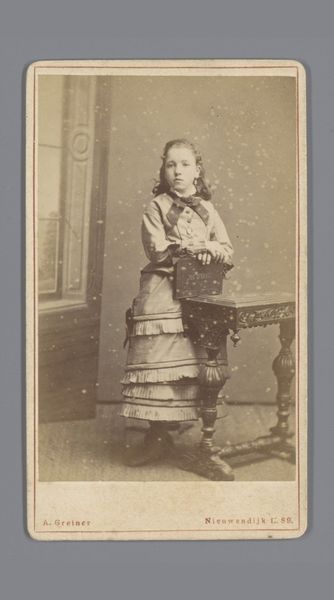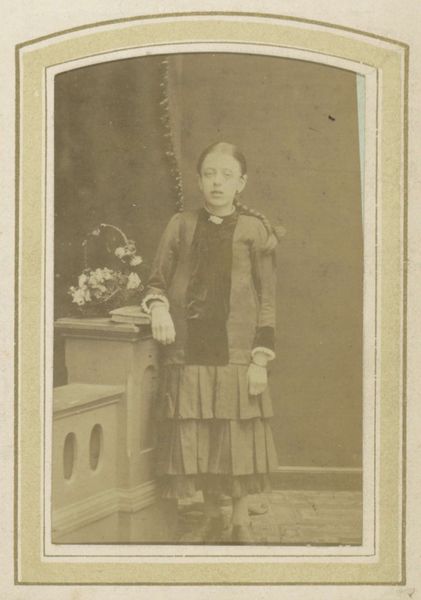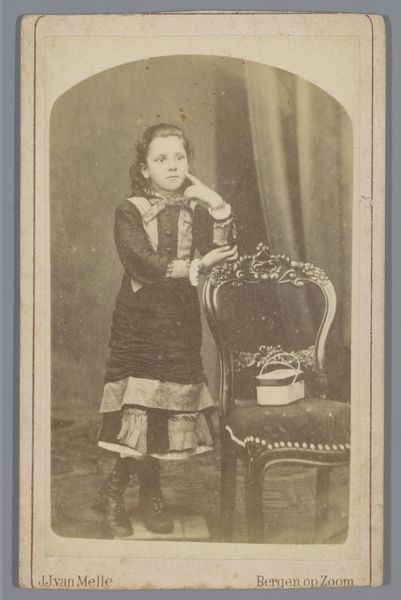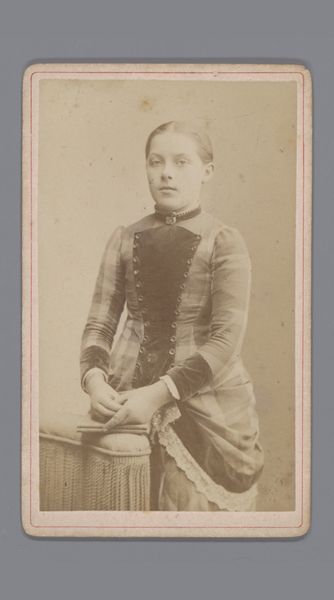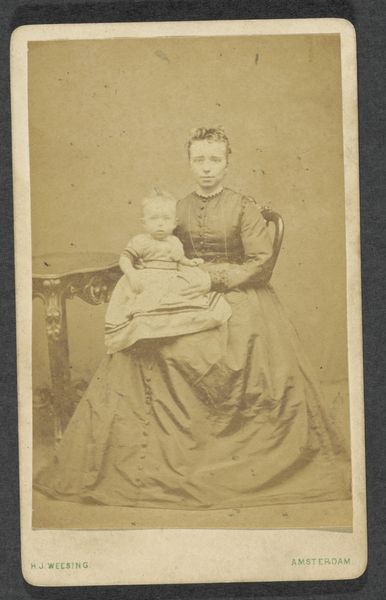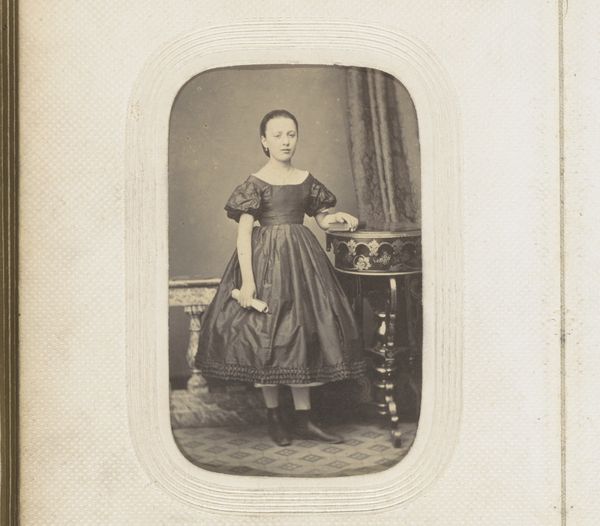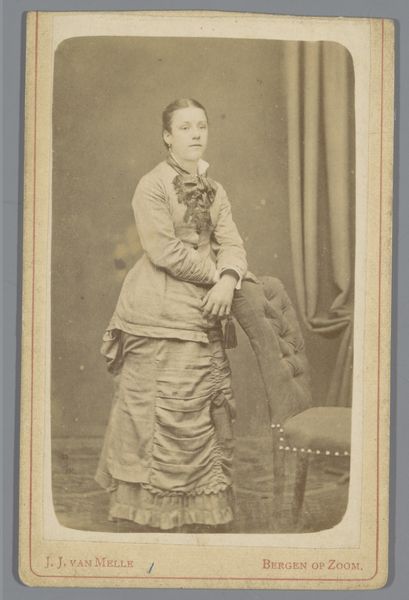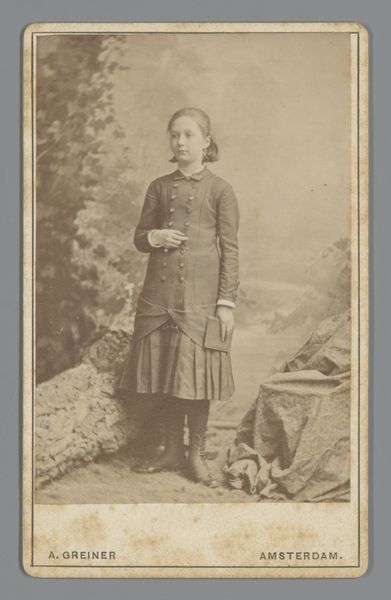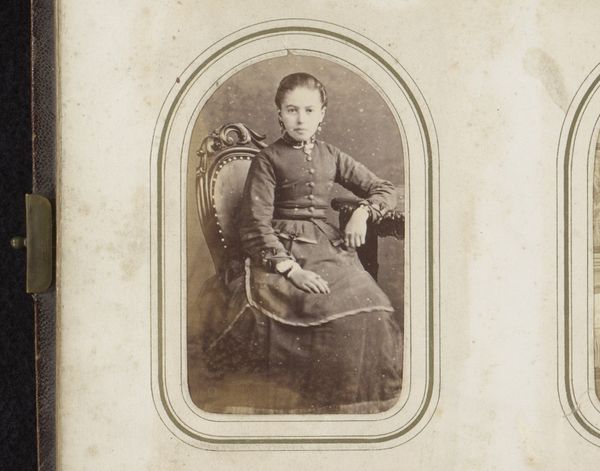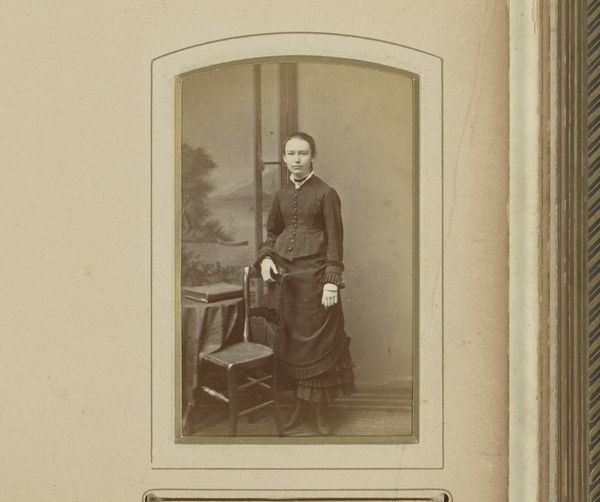
daguerreotype, photography
#
portrait
#
book
#
daguerreotype
#
photography
#
genre-painting
#
realism
Dimensions: height 94 mm, width 60 mm
Copyright: Rijks Museum: Open Domain
Editor: Here we have Joseph Maes' "Portrait of an Unknown Girl with a Book," a daguerreotype made sometime between 1863 and 1866. The process itself is fascinating, this ghostly image captured on silver-plated copper… It feels incredibly intimate. What can you tell me about it? Curator: It’s vital to consider the rise of photography alongside industrial developments in the 19th century. The production of these images, daguerreotypes, became a burgeoning industry. Think about the materials – the silver, the copper, the chemicals – all extracted, manufactured, and distributed. What kind of labor force was required to support that? Editor: That's interesting! I was so focused on the girl, but the physical creation is key. Were these readily available? Curator: Available, but perhaps not equally accessible. A portrait like this became a commodity, a signifier of status. Consider the clothing – likely made by someone, or many people, to present an aspirational idea. Who had access to that consumption? Who made the book? Editor: So, it is not just a representation of the girl, but also of all of the invisible labour. The materiality really complicates the picture. I was drawn to the person, but now I'm thinking about everything that surrounds and produces her image. Curator: Precisely. The "unknown girl" is almost secondary to the complex web of production that made this image possible. Where did the materials to print it come from? It reveals much more about Victorian society than initially meets the eye. What does Realism mean, if all we see is labor? Editor: It reframes the definition, away from simply mirroring reality to showing its foundations. I hadn't thought about it like that! Curator: Reflecting on those foundations gives us greater insight, and more to see.
Comments
No comments
Be the first to comment and join the conversation on the ultimate creative platform.
